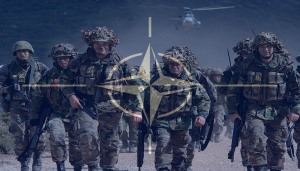Rick Rozoff
Global Research
The United States and its military allies in the North Atlantic Treaty Organization have entered the third month of war in Afghanistan this year, which President Barack Obama in December of 2009 announced as the year in which American and other foreign occupation forces would be reduced preparatory to their full withdrawal.
Within months of the U.S. head of state’s claim, the commander-in-chief had over 90,000 troops in the conquered country and currently there are 60,000 more from some fifty other nations serving in NATO’s International Security Assistance Force (ISAF). The total number exceeds that of any foreign military force ever before stationed in Afghanistan. The presence of American and allied troops, beginning as it did on October 7, 2001, is the longest in the Asian nation’s history, with U.S. forces already in the country for several months longer than Soviet troops were stationed there from late 1979 until early 1989.
Since Obama’s pledge that U.S. and NATO troop strength would be reduced this year – not a firm deadline but an evasion, a self-serving lie designed to take the sting out of the announcement of increased troop deployments, one the international community, self-styled and genuine, chose to take at face value – the world’s only ongoing war of occupation has stretched into not only the longest armed conflict in Afghanistan’s history but also in that of the U.S.
In the same interim several new force contributors like Armenia, Bahrain, Colombia, Egypt, Japan, Kazakhstan, Malaysia, Montenegro, Mongolia, South Korea (which had withdrawn an earlier contingent in 2007) and Tonga were recruited to provide troops to serve under NATO’s Afghan command, to which the overwhelming majority of American troops are now also assigned, and to be initiated into 21st century warfare under the control of the West.
Last year marked the largest amount of U.S. and ISAF deaths in the war that is now in its eleventh calendar year, as well as the most Afghan government troop and police fatalities, the highest number of reported insurgent deaths and the most civilians slain in the nearly decade-long war. 712 foreign soldiers and almost 10,000 Afghans were killed in 2010.
To the east of Afghanistan, unmanned aerial vehicle (drone) missile attacks conducted by the U.S. Central Intelligence Agency killed in the neighborhood of 1,000 people in Pakistan last year, the most in any year since the cowardly targeted assassinations and concomitant civilian “collateral damage” were begun in 2004 and almost half of the total dead for the entire period.
As last year wound down, bombing, strafing and other air attacks launched by the U.S. and NATO increased in intensity, with October registering the highest monthly number of air combat missions, over 1,000, of the war to date.
The Pentagon has ordered a record quantity of Predator, Reaper and other death-dealing drones for this year, beyond to the new “drawdown” date – 2014 – and for as far afterward as it chooses to continue and further escalate the war on both sides of the Afghan-Pakistani border.
On that score, the infinite plasticity of a final withdrawal date, U.S. Marine General James Mattis, the head of U.S. Central Command, stated last month that he was “militarily uncomfortable” with the 2014 deadline, [1] and Senator Joseph Lieberman said “it was unwise to set the beginning of any exit date.” [2]
In addition to unprecedented foreign troop numbers, air attacks and drone operations, head of U.S. Special Operations Command Admiral Eric Olson recently said of special forces operations, increasingly the ground combat emphasis for America’s counterinsurgency war in South Asia, that the demand for special operations forces in Afghanistan is “insatiable,” and:
“As we have essentially doubled our force over the last nine years [and] tripled our budget over the last nine years, we have quadrupled our overseas deployments over the last nine years.” [3]
We will protect your privacy…guaranteed!
U.S.-selected and -protected Afghan President Hamid Karzai announced last month that Washington intends to establish permanent military bases in his nation – a development that was evident to many almost a decade ago – and “The bases would enable US troops to remain in the area beyond the planned transfer of security responsibility from US and NATO troops to Afghan forces by end of 2014….” [4]
The military installations to be retained, added and expanded would include the Bagram, Kandahar and Shindand air bases in the north, south and west of the nation from which the Pentagon could conduct surveillance and combat operations not only in Afghanistan but throughout the region.
Afghans are not to be spared another decade – or generation or more – of Western military occupation and attacks of the sort that occurred on February 17 in the eastern province of Kunar.
A week after the event, an Afghan government investigation determined that NATO air strikes targeted civilians in a village in the province, killing over five dozen people including 50 women and children, among them 19 females from seven months to 18 years of age. 21 teenage boys and 15 elderly men were also slain. [5]
The head of the government delegation appointed to conduct the probe stated:
“After four days of discussions and interviews with tribal leaders, security officials and other civilians, we found that 65 civilians were killed by NATO missiles in the Ghazi Abad district of Kunar province.” [6]
In the week between the slaughter and the release of the report documenting its details, a NATO attack in the province of Nangarhar “hit a house, killing a couple and their four children,” according to a spokesman for the province’s governor. [7]



Be the first to comment on "U.S. And NATO Escalate World’s Deadliest War On Both Sides Of Afghan-Pakistani Border"